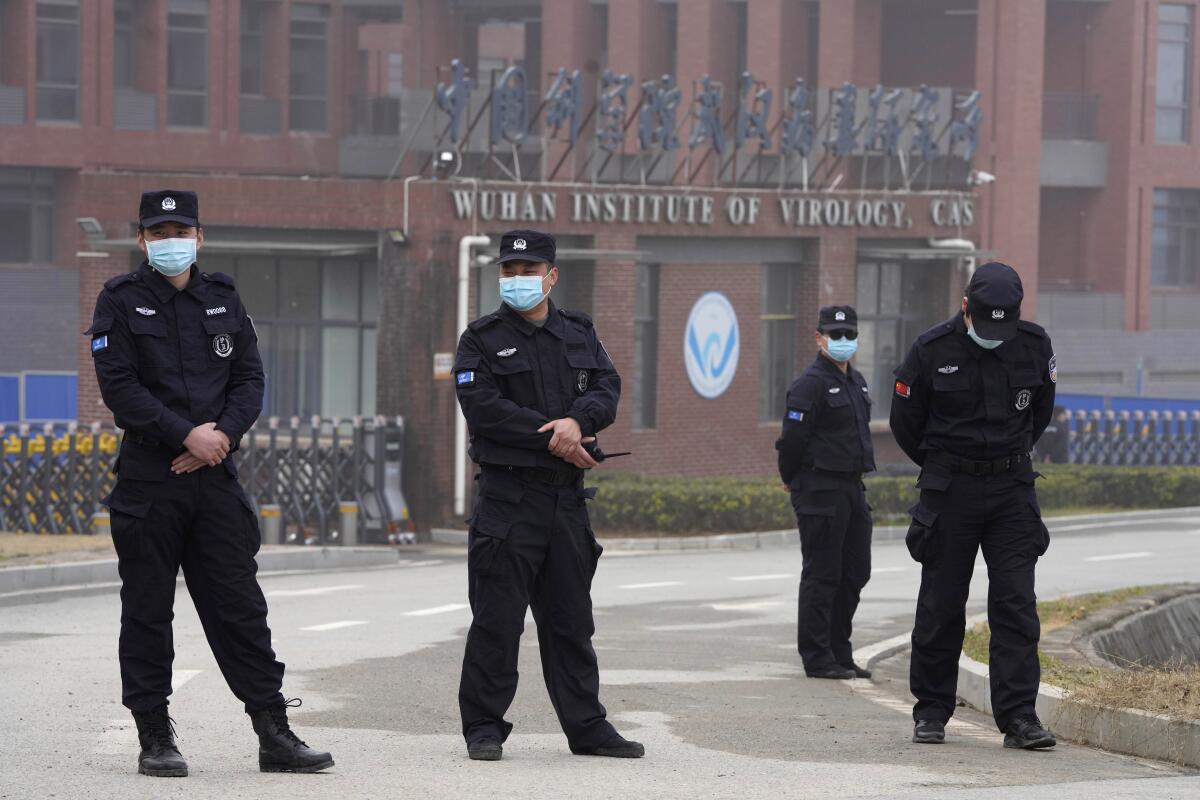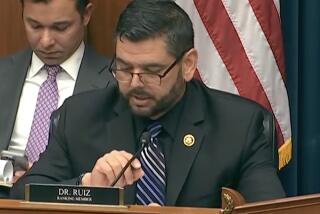Editorial: COVID-19 origins aside, U.S. needs to face its own pandemic failures

- Share via
Is the COVID-19 pandemic the result of an accidental release of a dangerous virus created at the Wuhan Institute of Virology? Or did it arise naturally, jumping from an animal to a human, as so many other dangerous infectious organisms do?
Until recently the “lab-leak” theory was largely viewed as a political ploy by the Trump administration to deflect attention away from its inept response to the pandemic. Facebook went so far as to ban posts that pushed the idea, which was popular among conspiracy theorists. The scientific community and the Chinese government maintained that SARS-CoV-2 jumped from an animal to a human. It was (and is) a reasonable assumption; that’s how the two previous deadly coronaviruses, which caused SARS and MERS, were presumed born. In March, a joint investigation by the World Health Organization and Beijing concluded that it was “extremely unlikely” the virus escaped from a lab; instead, the investigators said, it could have originated at a wild animal farm.
But the lab accident theory is plausible too. Dangerous viruses escape from labs with alarming regularity. And new information has lent new credence to the idea that it’s at least as possible that the virus was manufactured by humans as by nature. The WHO report was criticized, even from within its own ranks, for relying on information from Chinese authorities who, for obvious reasons, had an incentive to withhold evidence that might lay the blame for the pandemic at their feet. Then new information emerged about workers at the lab getting seriously ill from some COVID-like infection in fall of 2019, and a growing number of scientists called publicly for deeper examination of the origin of COVID-19.
Last week, President Biden asked the intelligence community for a more thorough investigation into the two scenarios. He’s right to do so. There’s value in trying to pinpoint, to the degree it is possible, the provenance of this deadly virus in order to stop another one from emerging in the same manner. However, it’s unclear if U.S. agents will have better access to any illuminating information than the WHO team.
Democrats and the media are now being ridiculed for dismissing the lab leak theory out of hand when President Trump uttered it. The rush to judgment was wrong, but consider the source. Trump lied so often, many of his statements about COVID-19 had no credibility. (Remember bleach injections?) And Trump made it clear from the start of the pandemic that he was going to blame China whether there was evidence to support it or not.
We may never be certain of the true origins of COVID-19, but we can be sure that this isn’t the last time humanity will be faced with a deadly virus. To that end, the U.S. needs to spend at least as much energy investigating how it handled — and mishandled in some cases — the pandemic once it arrived. We may not be able to stop nations or nature from letting loose deadly diseases, but we can and should do a better job responding to them.
More to Read
A cure for the common opinion
Get thought-provoking perspectives with our weekly newsletter.
You may occasionally receive promotional content from the Los Angeles Times.










